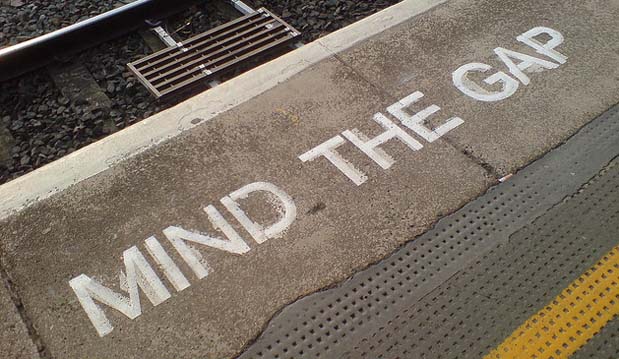 There are three steps to identifying performance gaps in call center agents:
There are three steps to identifying performance gaps in call center agents:
- Create a bullet-proof monitoring form
- Develop a companion Call Quality Guide
- Hold frequent calibration sessions.
This blog post will address the first issue: How to create a bullet-proof monitoring form to aid in evaluating gaps in employees’ performance.
The Role of the Monitoring Form in Identifying Employee Performance Gaps
The trick to creating a great monitoring form is to first create a list of behaviors that you want to hear during a call. Once you have that list, divide the behaviors into “Standards” and “Objectives.”
Employee Performance Standards
Standards describe the minimum acceptable level of performance for all reps. These behaviors relate to the “bones” of the job–what’s required of every employee in every customer interaction. If an employee doesn’t meet a Standard, he or she falls below the line for acceptable performance, and you’ve identified an employee performance gap. Standards are quantifiable, meaning they’re either met or they’re not—there are no ifs, ands, or buts with Standards. Here are some examples:
- Verifies customer name and account number
- Gets agreement on problem statement
- Offers to send a preview package (if customer qualifies)
- Asks for an order
If a team member has a performance gap around one of these critical behaviors, he or she fails the call. If the employee accomplishes all Standards on a call—even if it’s not done with a lot of skill or pizzazz—the employee meets the minimum acceptable level, and there is no employee performance gap. Of course, you want your employees to do more than achieve the bare minimum. This is where Performance Objectives come in.
Employee Performance Objectives
Performance Objectives are somewhat less distinct than Standards, and as such, are measured more subjectively. Objectives are qualitative; they describe something you want the employee to accomplish, but you understand it will be accomplished to different degrees depending on the employee’s skill level and on the unique properties of the interaction. Whereas when measuring Standards, you determine gaps in performance in terms of whether or not they were met, when measuring Objectives you assess how well they were met. Here are several examples:
- Builds rapport with customer
- Handles challenges effectively
- Exhibits strong verbal and vocal skills
- Minimizes dead air
Performance Objectives are behaviors that you would expect would be done better by employees with more experience. For example, someone just out of training would not be able to handle challenging callers as well as someone who’s been on the job for a while.
Objectives are scored on a sliding scale of 1–3 or 1–5. They are not behaviors for which you would terminate someone’s employment; they are behaviors that you hope will improve over time with practice and coaching. You can identify and coach performance gaps in employees who score at the low end of the scale.
How Does Differentiating Standards and Objectives Help Identify Gaps in Employee Performance?
There are two other reasons for differentiating these two types of performance measures: consistency and fairness. It should be relatively easy for all supervisors to score Standards consistently to identify employee performance gaps because they are cut-and-dried: “yes” or “no.” But how would you identify a gap in “sounds professional?” How about a gap in “exhibits strong verbal and vocal skills?” Do you think everyone observing performance would agree whether or not there was a gap?
That’s the ideal situation, but it happens less frequently than desired. It’s much easier to agree on Standards since they’re “yes” (the Standard was met and there’s no gap in the employee’s performance) or “no” (the Standard was not met and there is a gap in the employee’s performance). Since Standards are, by definition, the minimum accepted level of performance, it’s obvious when a gap occurs. These gaps must be addressed and corrected immediately.
Of course, the ideal situation is when all supervisors who listen to a call score the call the same. That way, an employee receives consistent feedback no matter who is giving the feedback, and the employee learns what good performance looks like. The only way for that to happen is to create a Call Quality Guide and hold ongoing call calibration sessions with your supervisors. Stay tuned for the second and third posts in this series to learn more about these topics.